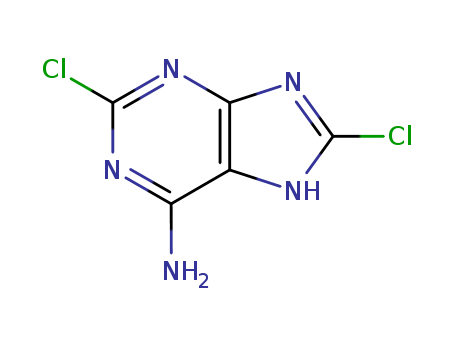- Chemical Name:2,8-Dichloro-1H-adenine
- CAS No.:2914-09-2
- Molecular Formula:C5H3 Cl2 N5
- Molecular Weight:204.018
- Hs Code.:2933990090
- European Community (EC) Number:220-827-2
- DSSTox Substance ID:DTXSID70183394
- Nikkaji Number:J306.836F
- Wikidata:Q83054174
- Mol file:2914-09-2.mol
Synonyms:2,8-Dichloro-1H-adenine;2914-09-2;2,8-dichloro-1h-purin-6-amine;2,8-dichloro-7H-purin-6-amine;EINECS 220-827-2;2,8-dichloroadenine;SCHEMBL7526936;DTXSID70183394




